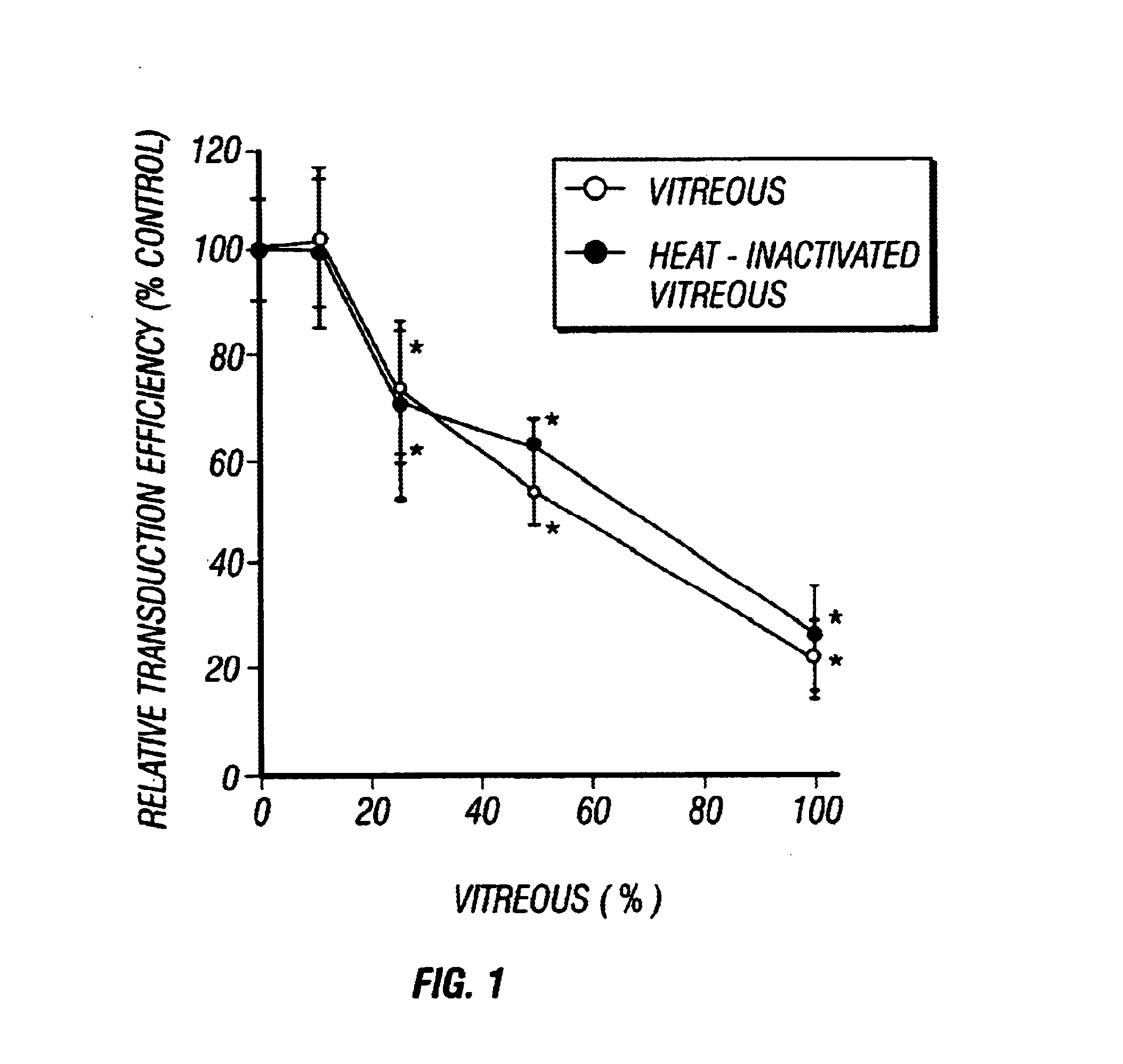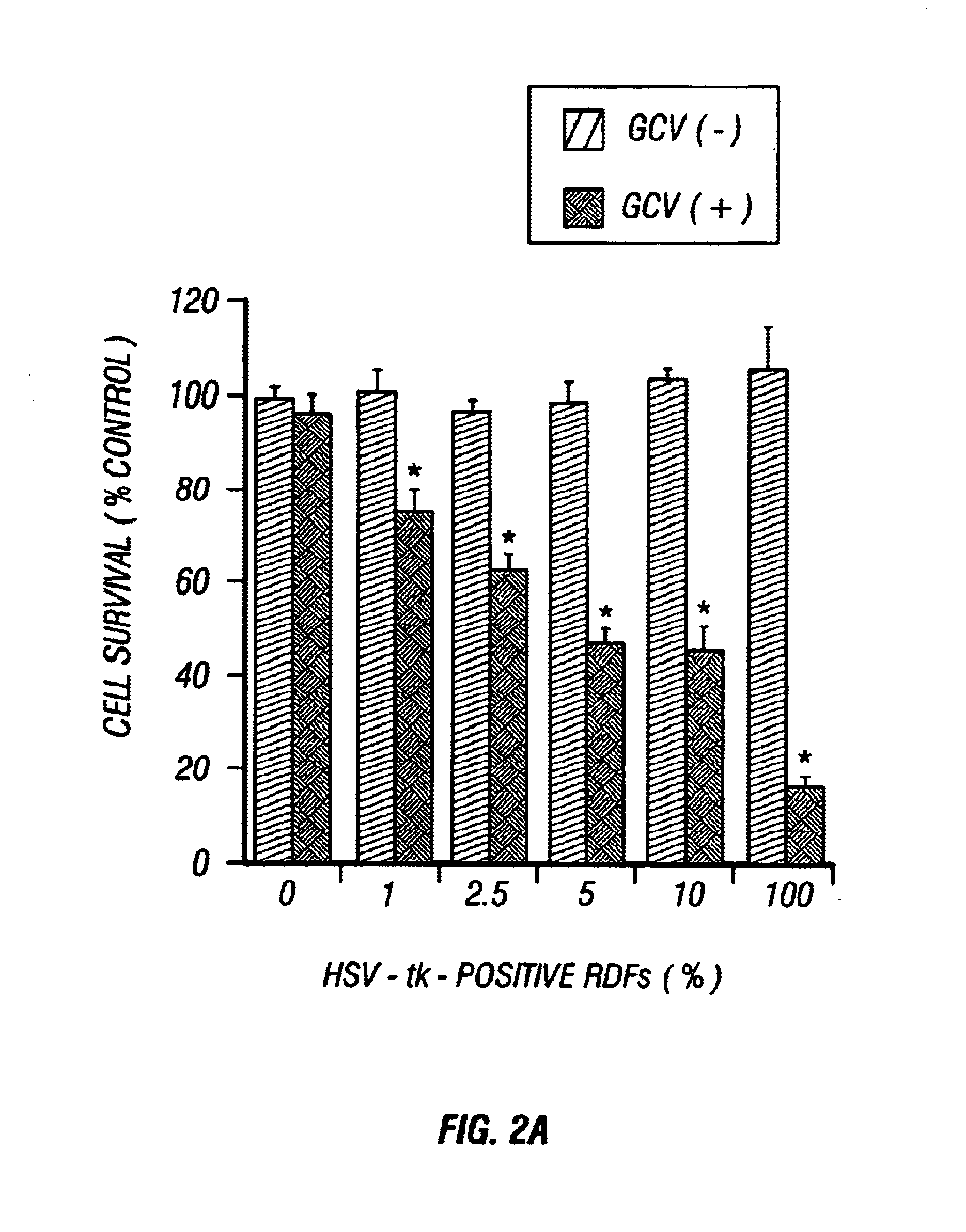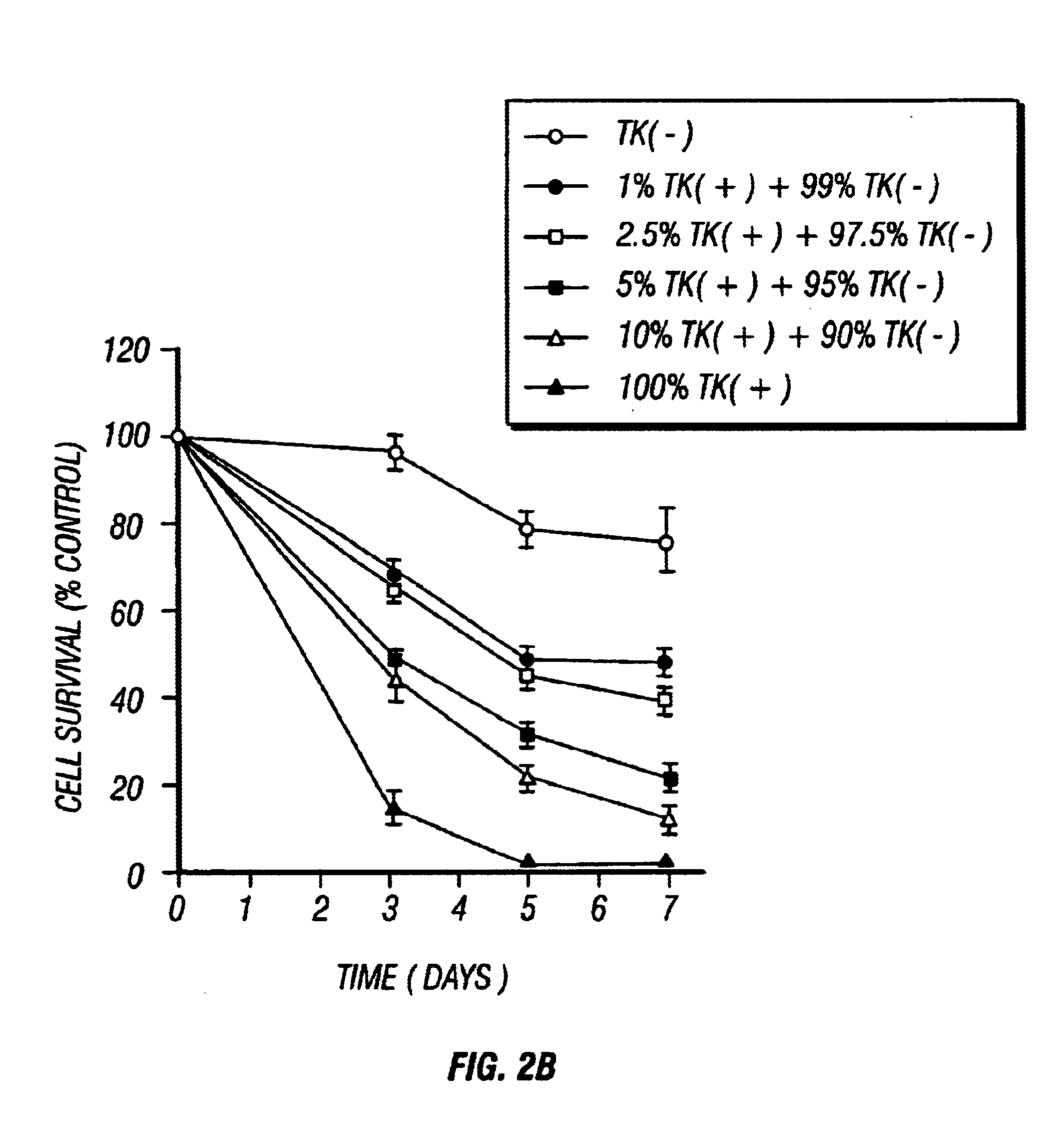Gene Therapy for proliferative vitreoretinopathy
- Summary
- Abstract
- Description
- Claims
- Application Information
AI Technical Summary
Benefits of technology
Problems solved by technology
Method used
Image
Examples
example 1
Effect of Vitreous Humor on in vitro Transduction
Rabbit dermal fibroblasts were plated at 2.5×104 cells / well in 6-well plates (Corning, New York, N.Y.) and incubated overnight at 37° C. in 5% CO2. G1BgSvNa supernatant (1.3×106 cfu / ml) was used for transduction in vitro. The multiplicity of infection (MOI), or vector particle / target cell ratio was 52. A tenfold serial dilution of vector supernatants (10−2, 10−3, 10−4) containing 10%, 25%, 50% and 100% rabbit vitreous humor (with or without heating for 30 minutes at 56° C.) or 10% heat-inactivated fetal calf serum (FCS) as a control and 8 μg / ml Polybrene was added to all wells on day 2. The final volume of each well was 1 ml. After 2 hr of incubation, 4 ml of fresh DMEM-10 was added and the wells were incubated for an additional 22 hr at 37° C. in 5% CO2. On day 3, the medium was removed and replaced with DMEM-10 containing 800 μg / ml G418. Plates were incubated at 37° C. in 5% CO2. On days 6, 9 and 12, plates were replenished with fre...
example 2
In vitro Sensitivity of HSV-tk Transduced Cells to Ganciclovir
The sensitivity of HSV-tk positive RDFs (100% HSV-tk transduced RDFs) and HSV-tk negative RDFs to ganciclovir was determined by using a tetrazolium-based calorimetric assay (XTT assay) (Scudiero et al., Cancer Research, Vol. 48, pgs. 4827-4833 (1988); Roehm et al., J. Immunol. Methods, Vol. 142, pgs. 257-265 (1991)). HSV-tk positive RDFs and HSV-tk negative RDFs were seeded at a density of 5×103 cells / well of 96-well culture plates (Corning) and incubated with DMEM-10 at 37° C. in 5% CO2 overnight. Then cells were treated with DMEM-10 containing various concentrations of ganciclovir (GCV; Cytovene; Syntex Inc., Palo Alto, Calif.) or only DMEM-10. After a total of 72 hr incubation, XTT assay was performed using a kit (cell proliferation II; Boehringer Mannheim, Indianapolis, Ind.). The results were read on a microplate reader (MR700; Dynatech Laboratories, Inc., Chantilly, Va.).
Ganciclovir inhibited HSV-tk positive RDFs in...
example 3
In vitro Bystander Effect
To determine the cytotoxic effect of a small number of HSV-tk positive cells on neighboring HSV-tk-negative cells, cocultures of HSV-tk positive cells and HSV-tk-negative cells were performed by mixing these two cells in varying proportions. Briefly, mixtures of HSV-tk-positive and -negative RDFs (2.0×104 cells / well) were seeded at various mixing ratios (0, 1.0, 2.5, 5.0, 10, and 100% HSV-tk-positive cells of total cells) in 24-well culture plates (Corning) and incubated at 37° C. in 5% CO2 overnight. Cells were then treated with 1 μg / ml ganciclovir for 3, 5, and 7 days. The number of cells was counted with a Coulter counter (Coulter Electronics, Inc., Hialeah, Fla.).
After 3 days of incubation, ganciclovir inhibited proliferation of co-culturing cells. The inhibitory effect depended on the percentage of total cells that were HSV-tk positive (FIG. 2A). HSV-tk positive RDFs showed a toxic effect on HSV-tk-negative RDFs even in a co-culture of 1% HSV-tk positiv...
PUM
| Property | Measurement | Unit |
|---|---|---|
| Mass | aaaaa | aaaaa |
| Mass | aaaaa | aaaaa |
Abstract
Description
Claims
Application Information
 Login to View More
Login to View More - R&D
- Intellectual Property
- Life Sciences
- Materials
- Tech Scout
- Unparalleled Data Quality
- Higher Quality Content
- 60% Fewer Hallucinations
Browse by: Latest US Patents, China's latest patents, Technical Efficacy Thesaurus, Application Domain, Technology Topic, Popular Technical Reports.
© 2025 PatSnap. All rights reserved.Legal|Privacy policy|Modern Slavery Act Transparency Statement|Sitemap|About US| Contact US: help@patsnap.com



